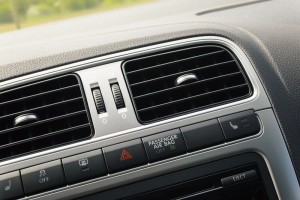Air Conditioner Repair
 Once your car’s air conditioner blows hot instead of a cool temperature, you ought to start by checking out about controls of the Air Management System throughout the dash, as covered to some extent of this article. If that doesn’t do the trick, the next step is to look under the hood at the Refrigerant Cycling System. Before you do anything, though, take a look at a service manual for your car, not only for information on how the system works, but also details involving its pressure and temperature control important features. The manual can tell you both procedures to follow and how far you can go with the basic testing that we’re going to discuss. It will also inform you of the hazards and safety precautions when working on the system.
Once your car’s air conditioner blows hot instead of a cool temperature, you ought to start by checking out about controls of the Air Management System throughout the dash, as covered to some extent of this article. If that doesn’t do the trick, the next step is to look under the hood at the Refrigerant Cycling System. Before you do anything, though, take a look at a service manual for your car, not only for information on how the system works, but also details involving its pressure and temperature control important features. The manual can tell you both procedures to follow and how far you can go with the basic testing that we’re going to discuss. It will also inform you of the hazards and safety precautions when working on the system.
Visual Clues:
Since you can see a lot just by looking, start by taking a quick look at the refrigerant cycling components under the hood with the engine off; first, look at the compressor and its drive belt. Is the belt connected, sufficiently stringent and in serviceable contour? Replacing a missing belt may be all that’s essential for a quick fix (and have a look at the additional belts while you’re at it, too).
Have a look at the refrigerant hoses for impairment (don’t be fooled by surface damage to the insulation that may be protecting the hoses). Since a small amount of lubricating oil is contained within the system, check if any areas or connections are oily, with no other possible outside source. Oil found on any A/C component, or at any of the hose or line connections lacking an outside source, usually indicates refrigerant loss at those points, which may require replacing those components and a recharge and retest of the system.
What about the wire connections to the compressor, any temperature or pressure switches, and condenser fan (in such a case equipped)? It should be securely connected and devoid of impairment. Also, makes sure it’s not routed next to moving or hot components. Any impaired wiring needs to be repaired, and the cause treated just before re-testing the system.
Is there any indicator of a critical breakdown of the compressor, such as an off-center drive hub, or paint damage or rust indicating severe overheating? Is there oil on it that doesn’t appear to have come from anywhere else? All of these are signs that you may have to setup a new one. If the compressor appears to be okay, get hold of its clutch hub (the round part that protrudes just forward of the belt pulley) and ensure it turns with only moderate resistance.
Alternatively, if there is evidence of absolute failure of the compressor, clearly, that’s about as bad as it gets. In the event the vehicle is much more than five or six years old, the proper way to take care of this problem is almost always by replacing the entire refrigerant cycling system, which unfortunately is big-dollar job.
